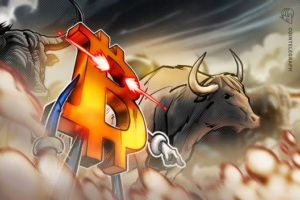In recent times, Wall Street has shifted its focus to the burgeoning Real-World Asset (RWA) tokenization market. Valued at an impressive projected $30 trillion, this market presents transformative potential within traditional finance (TradFi). Financial giants, including JPMorgan, BlackRock, and Citi, are now investing heavily as they recognize that tokenization is not just a trend but a fundamental shift in asset management, trading, and investment practices.
As the RWA tokenization industry evolves, it’s propelling growth across various asset classes. In 2024, there was a noteworthy increase in tokenized Treasurys, surging by 179%. Furthermore, private credit saw a significant rise of 40%, contributing to the overall market capitalization of tokenized assets increasing by 32% – a rate faster than the broader crypto market. Global investment firms like VanEck predict the RWA market could exceed $50 billion by year-end, reinforcing its momentum.
Tokenization is enhancing liquidity and accessibility for businesses and investors. This is especially promising in emerging markets, where barriers to capital can be steep. As institutions such as Franklin Templeton adopt blockchain technology to issue tokenized shares, they create an environment where investors can seamlessly participate in previously gated opportunities.
One of the transformative impacts of tokenization lies in its ability to introduce transparency. Asset-backed securities (ABS) demonstrate how tokenization streamlines the securitization process, establishing a clear, immutable record of ownership that lacks in traditional financial markets. This transparency reduces risks, builds trust, and lowers administrative burdens, enhancing accessibility for all investors.
Regulatory landscapes are also evolving favorably for tokenization, moving from restrictive measures to frameworks that stimulate innovation and safeguard investors. With evolving perceptions regarding blockchain and digital asset applications, we anticipate that regulatory bodies will continue supporting this asset class’s growth.
The demand for democratization in finance further highlights tokenization’s role in reshaping market dynamics. As this technology continues to progress, it enables smaller investors to seize opportunities once reserved for institutional players. By mitigating high barriers to entry, tokenization cultivates deeper liquidity, thereby strengthening financial ecosystems.
Institutions are witnessing the benefits of tokenization firsthand. The BlackRock USD Institutional Digital Liquidity Fund (BUIDL) exemplifies how quickly the sector can scale, forecasting extensive growth across complex asset classes, such as private credit, in the near future.
In conclusion, the integration of tokenization within financial markets signifies a monumental shift that Wall Street is determined to lead. As the industry continues to mature, the prospect of realizing a $30 trillion market is not far-fetched but rather an achievable reality.



